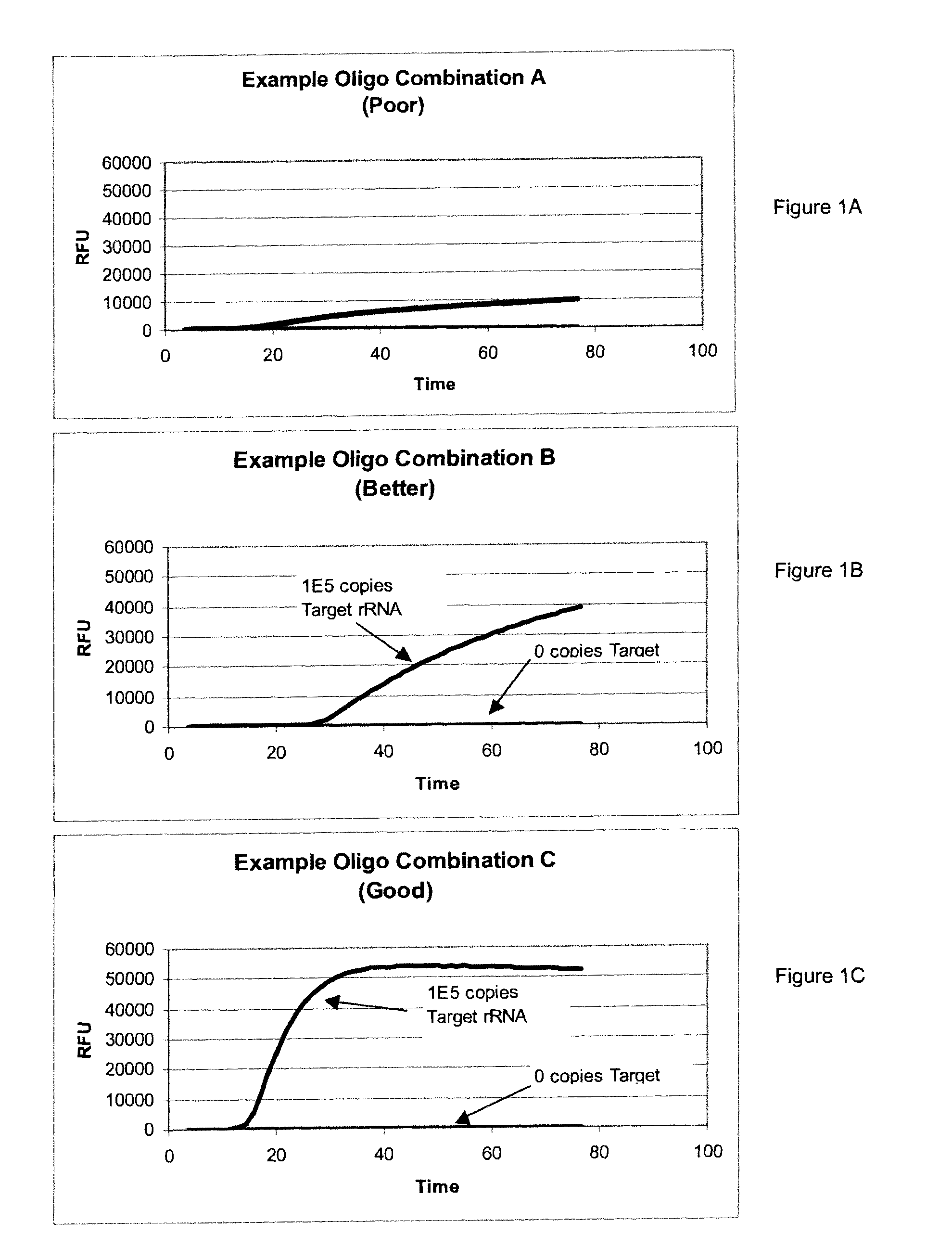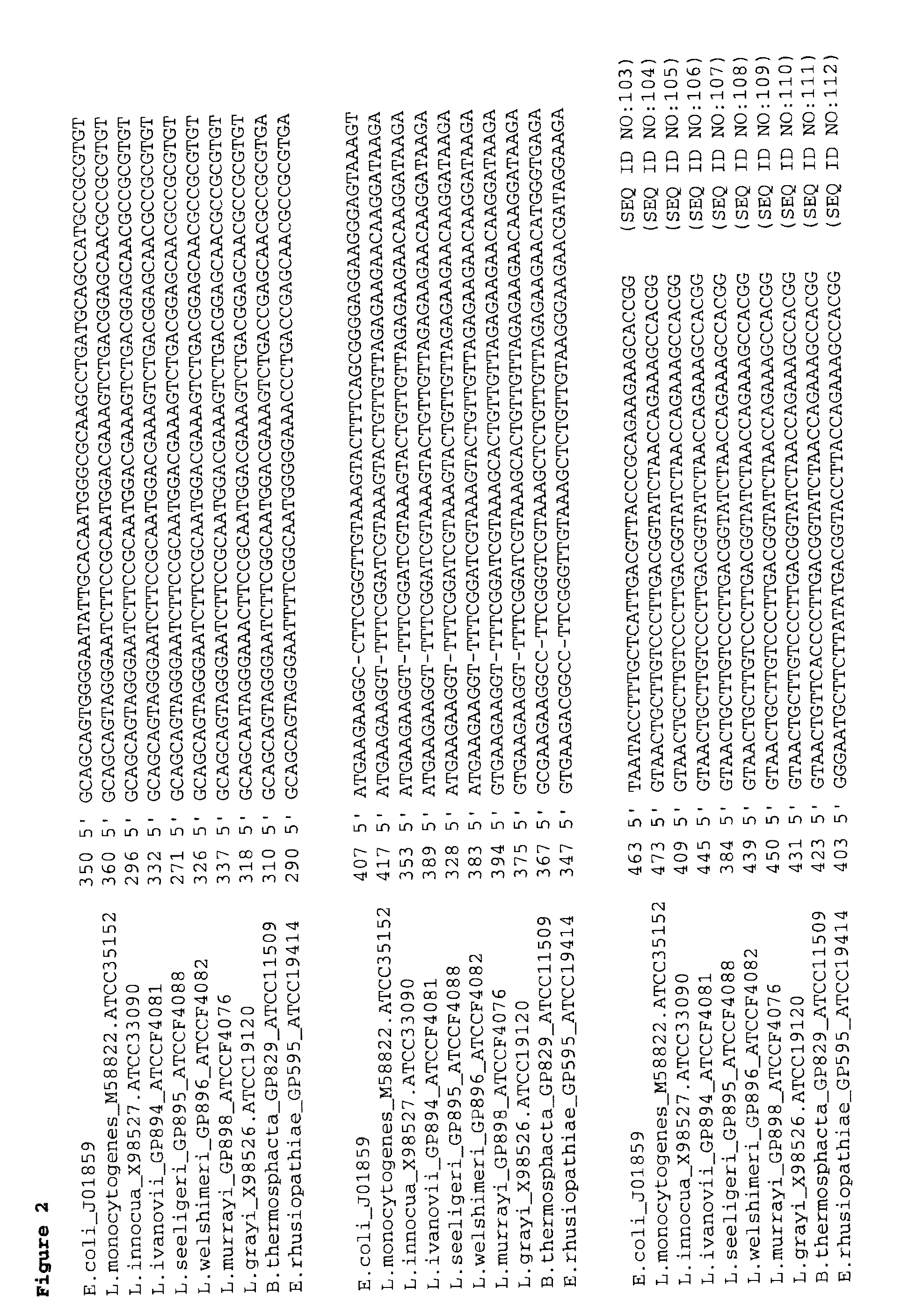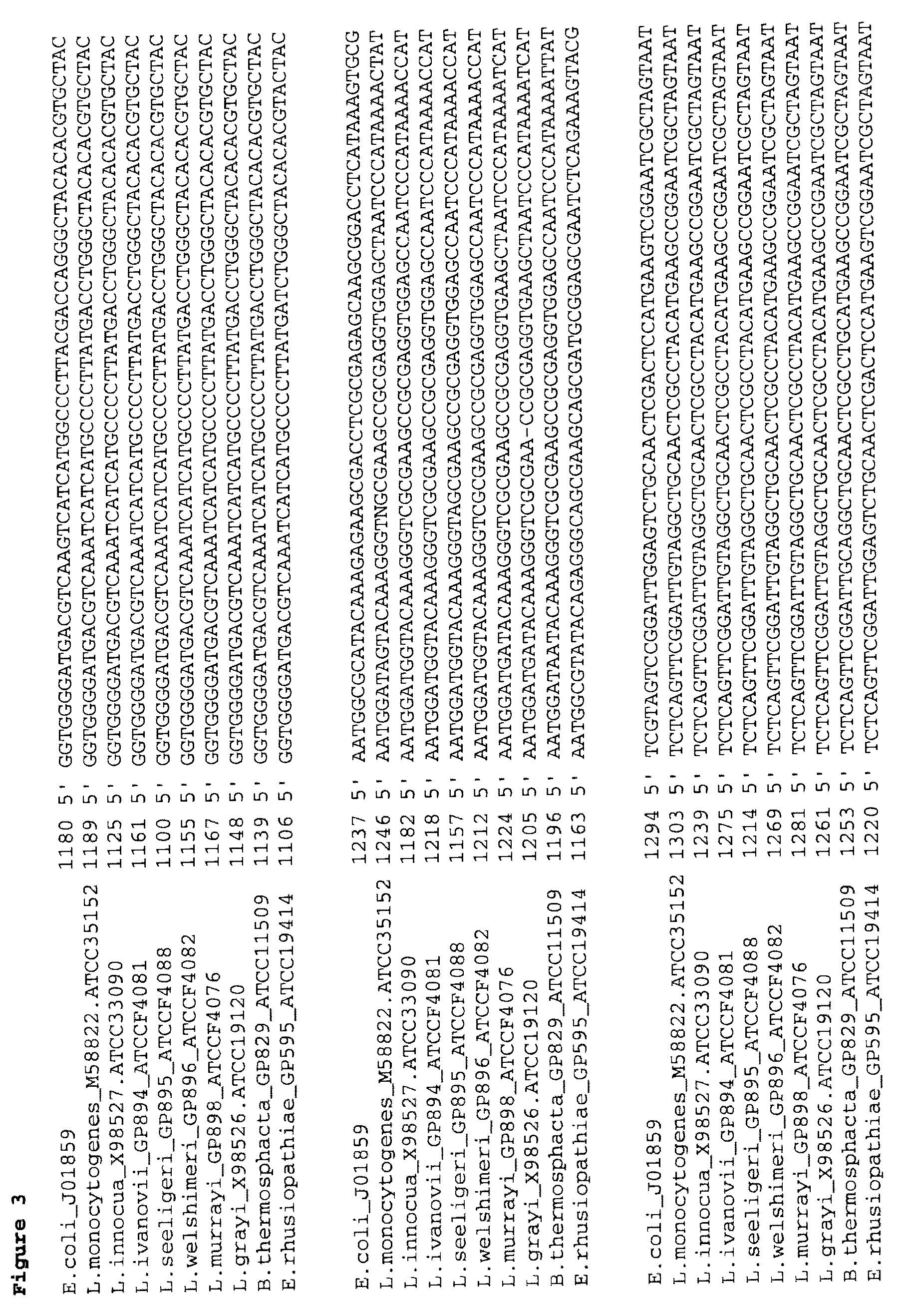Compositions, kits and related methods for the detection and/or monitoring of listeria
a listeria and kit technology, applied in the field of microorganisms, can solve the problems of soil contamination of vegetables, etc., and achieve the effect of improving specificity, sensitivity, or speed of detection
- Summary
- Abstract
- Description
- Claims
- Application Information
AI Technical Summary
Benefits of technology
Problems solved by technology
Method used
Image
Examples
example 1
Description of Illustrative Assay Reagents, Equipment and Materials
[0132]The following example describes typical assay reagents, protocols, conditions and the like used in the real-time TMA experiments described herein. Unless specified to the contrary, reagent preparation, equipment preparation and assay protocols were performed essentially as set forth below.
[0133]L. monocytogenes, ATCC 35152, was used as the positive control in all runs. Amplification Reagent was made ahead of time.
A. Reagents and Samples
[0134]1. Amplification Reagent The “Amplification Reagent” or “Amp Reagent” comprised approximate concentrations of the following components: 0.5 mM dATP, 0.5 mM dCTP, 0.5 mM dGTP, 0.5 mM dTTP, 10 mM ATP, 2 mM CTP, 2 mM GTP, 12.7 mM UTP, 30 mM MgCl2, and 33 mM KCl in 50 mM HEPES buffer at pH 7.7. Primers and other oligonucleotides were added to the Amp Reagent.
[0135]2. Enzyme Reagent. The “Enzyme Reagent” comprised approximate concentrations of the following components: 1180 RTU / ...
example 2
Design and Evaluation of Listeria Oligonucleotide Sets
[0148]Using a region corresponding to the 450 region of the E. coli rRNA sequence (FIG. 2), several T7 Providers, Blockers, Primers, and Torches were designed.
A. Screening
[0149]The real-time TMA amplification reactions were performed essentially as follows for simultaneous amplification and detection of analyte and the internal control. A “masterplate” was made that contained T7 Provider (0.5 pmol / μL), Primer (0.5 pmol / μL), and Blocker (0.05 pmol / μL) in reconstituted oligoless amplification reagent (Amp Reagent). Each masterplate well contained 200 μL of a different combination of oligos. For testing, 10 μL of each masterplate well mixture was placed in an MJ plate for amplification. 20 μL of the target nucleic acid in oligoless amplification reagent was added to the plate. Amplification reagent without target was used as the negative control. The amplification plates were covered and placed on a THERMOMIXER apparatus at 60° C. f...
example 3
Evaluation of Target Capture Integration
[0152]Target capture oligos (TCO) for the Listeria 16S rRNA were designed to capture target rRNA in regions corresponding from about 230 to 355 and from about 490 to about 525 hp of E. coli rRNA. Eight oligos (see Table 1) were designed, synthesized, and tested. Specificity was not built into the TCO's, therefore, they were screened using only L. monocytogenes and L. grayi RNA. The KINGFISHER 96 processor (“KF96”) was used with a large magnet. Target capture was performed using an Axygen deep-well (DW 96) plate using a 1 mL sample volume. Analysis of the L. monocytogenes capture showed that TCOs 2, 3, 6, and 7 were slightly better than TCO 1, 4, 5, and 8. Further evaluation demonstrated that TCOs 2, 3, 6, and 7 all worked acceptably well. Therefore, it was decided to scale-up TCO 2 for the Food Study.
[0153]The method of Target Capture with the KINGFISHER 96 processor is summarized in Table 4. In brief, samples were mixed with Lysis Reagent to ...
PUM
| Property | Measurement | Unit |
|---|---|---|
| Fraction | aaaaa | aaaaa |
| Electrical conductance | aaaaa | aaaaa |
| Fraction | aaaaa | aaaaa |
Abstract
Description
Claims
Application Information
 Login to View More
Login to View More - R&D
- Intellectual Property
- Life Sciences
- Materials
- Tech Scout
- Unparalleled Data Quality
- Higher Quality Content
- 60% Fewer Hallucinations
Browse by: Latest US Patents, China's latest patents, Technical Efficacy Thesaurus, Application Domain, Technology Topic, Popular Technical Reports.
© 2025 PatSnap. All rights reserved.Legal|Privacy policy|Modern Slavery Act Transparency Statement|Sitemap|About US| Contact US: help@patsnap.com



